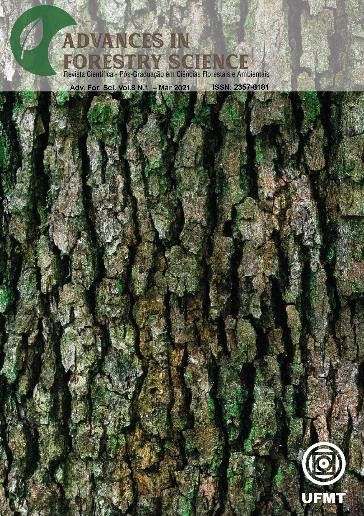Mensuração diamétrica em um fragmento de Floresta Estacional Decidual
DOI:
https://doi.org/10.34062/afs.v8i1.12010Abstract
With typical vegetation of the Northeast region of Brazil, the Caatinga is one of the largest areas of dry forest formation in South America, and it is necessary to seek techniques and instruments for measuring trees that promote greater agility and less error. The objective of the study was to compare the performance and efficiency of the tape measure, the Caliper and the Finnish Parabolic Caliper in the diametric measurement of trees in an area of Decidual Seasonal Forest. In a plot of 400 m², 62 trees were selected. The DAP measurement was carried out by five operators, using the tape measure, caliper and Finnish Parabolic Caliper. For each measurement there was the timing of the time spent for the measurement in each tree and the total time spent in the plot. A questionnaire was also applied to the operators to evaluate the efficiency, advantages and disadvantages of each instrument. The average time of the DAP measurement of the tree fust was greater with the tape measure, followed by the caliper and the Finnish Parabolic Caliper, indicating that the latter provides faster measurement. It was also observed that there is no difference in the DAP size between the three instruments, showing that they give accurate results. The operator influences the measurement time, and it is necessary that they have previous knowledge about handling and measurement procedures. The study showed that Finnish Parabolic Caliper was the instrument that provided the fastest measurement. The three instruments are efficient for Caatinga.
Downloads
Downloads
Published
Issue
Section
License
All copyright must be assigned to the Federal University of Mato Grosso.

